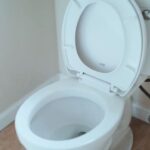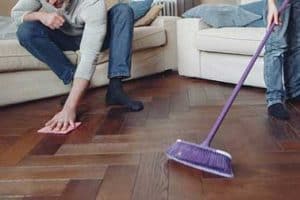Polyurethane paint is expensive enough by itself, so you should save money wherever you can. One way to save money is to clean the brushes and rollers you used yourself. By doing that, you can at least offset some of the costs involved in using polyurethane paint. To guide you, use this article to give you an idea or two on how to clean polyurethane brushes.
It only takes a couple of steps to clean polyurethane brushes. For instance, cleaning water-based paints off brushes requires only soap and water. If you are cleaning oil-based PU, you first need to clean the bristles with mineral spirit.
Finish this off by scrubbing using a nylon brush with a bit of soap and running water. After washing, allow the brushes to dry completely and store them somewhere away from direct sunlight.
Read on to learn how to clean polyurethane brushes and rollers so you can still maximize their use.
How to Clean a Polyurethane Brush – Water-based Type
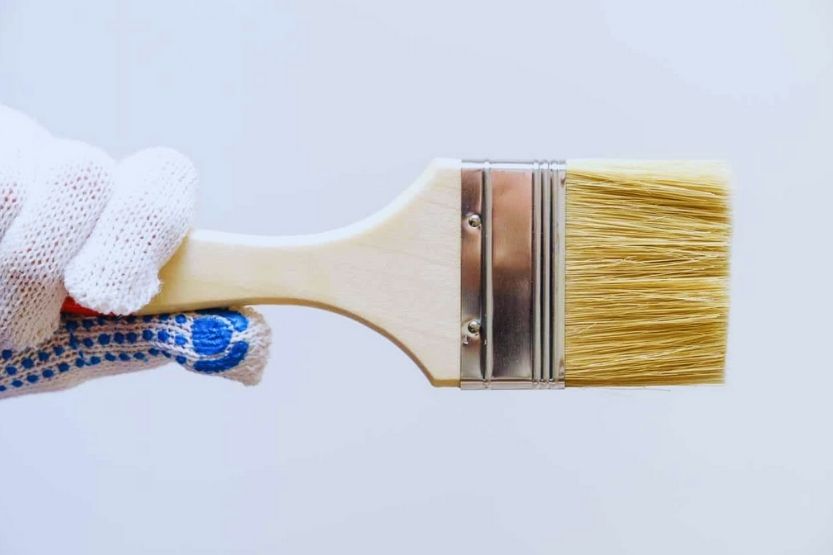
Cleaning a brush used to apply water-based polyurethane paint is quick and easy. It only takes a couple of minutes to get your brush clean, so it is always worth a try:
What You’ll Need
- A pair of rubber gloves
- Two empty plastic cups
- Running water
- Dish soap
Directions
1. Fill the Cups With Water
The cups must be big enough that you can submerge the brush at least up to its ferrule. The ferrule is the metal part that holds the bristles in place.
2. Dip the Brush into One Cup
After that, bend the bristles so that each one is soaked completely. Continue bending the bristles until the water gets dirty.
3. Repeat the Process Using Clean Water
Once the water in the first cup gets dirty, move on to the next cup and repeat the process. Discard the dirty water from the first cup and fill it again with clean water. Repeat the process until the water in the last cup remains relatively clear.
4. Rinse the Bristles Under Running Water
Bring your brush to the sink and rinse the bristles under running water.
5. Use Dishwashing Soap
Put a bit of dishwashing soap on the bristles. Use your hands to give them a good scrubbing. Rinse and repeat until you are satisfied with the cleanliness of the brush.
6. Allow the Brush to Dry
Hang the brush so that it can dry completely. It will typically take an entire day for a paintbrush to dry, but it will be ready to use again once it does.
How to Clean a Polyurethane Brush – Oil-Based Type
The brushes used to apply oil-based polyurethane paints and varnishes are significantly harder to clean than water-based ones. However, it will also not take that long to clean them thoroughly. It will take just 15 to 20 minutes per brush in most cases.
The key here is to clean the brushes while the paint is still wet. Allowing the brushes to dry will make them almost impossible to clean:
What You’ll Need
- A pair of rubber gloves
- 2 plastic cups
- Mineral spirits
- Running water
- Dishwashing soap
- Nylon brush
Directions
1. Fill the Cups with Mineral Spirit
Fill the cups with enough mineral spirits to submerge the brush up to the ferrule. The plastic cups should be thick enough that the mineral spirits cannot melt them.
2. Dip the Brush into the First Cup of Mineral Spirit
Stir the brush around the cup and press it on the bottom to bend the bristles. Ensure that all bristles are soaking in mineral spirits.
3. Take the Brush out Once the Mineral Spirit Gets Dirty
Wring out as much of the dirty mineral spirits from the brush. Dip it into the other cup with clean mineral spirits. Repeat the process until the last cup of mineral spirit remains clear.
4. Rinse the Brush Thoroughly Under Running Water
Bring the brush to the sink and rinse it thoroughly under running water. Put a good amount of dishwashing detergent on the bristles. Scrub them thoroughly using your hands for a minute or so. Rinse thoroughly to get as much of the mineral spirits out.
5. Continue Washing and Rinsing
The first couple of passes with the dishwashing soap may not make the bristles lather. The reason is that there are still some mineral spirits in bristles. Just continue washing and rinsing. By doing that, you can eventually make the brush form a lather.
6. Continue Scrubbing the Brush
Once you can get a generous amount of lather on the brush, place it on the bottom of the sink. Continue thoroughly scrubbing, but this time, using the nylon brush. This will get every bit of dirt out of the bristles. Rinse and repeat a couple of times.
7. Hang the Brush for Drying
It could take a couple of hours to a day to dry the brush completely. The length of time needed for drying will depend on the size of the brush.
What Is Polyurethane Paint?
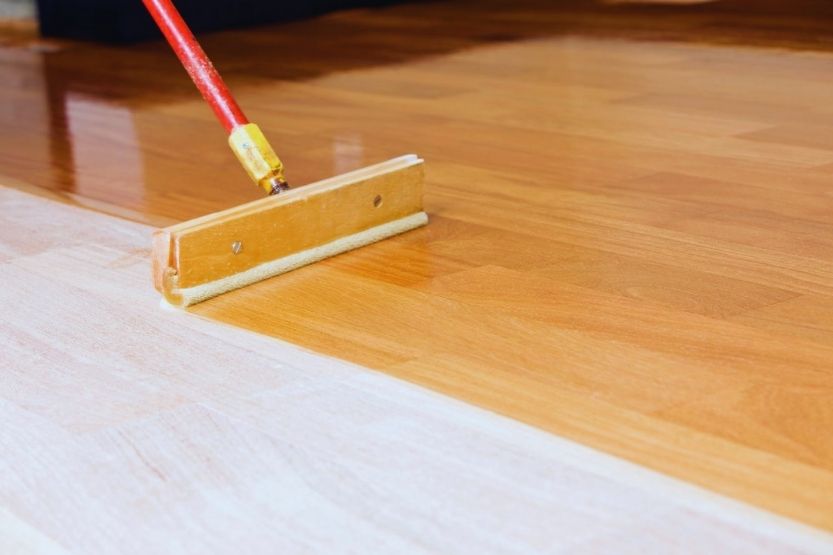
Polyurethane Forms a Protective Barrier with a Glossy Finish
Now that you know how to clean polyurethane off the brush, it is time to understand exactly this material. Polyurethane is a chemical compound that, when used correctly, can form a protective barrier with a glossy finish. This barrier can help protect the painted surface against the elements and other forms of damage.
Unsurprisingly, the paint that uses this chemical is also used polyurethane. You can also provide a protective coating on surfaces against corrosion and deterioration.
Provide Thermostatic Coating
Polyurethane is a polymer that connects itself to carbamates to provide a thermostatic coating. This means that PU will not melt when you heat it. That said, you should not worry about your precious PU paints and varnishes melting once you finish applying them.
Various Polyurethane Coatings You Can Choose From
There is a variety of polyurethane coatings that you can choose from. Also, what you should use will depend on the type of finish you want your project to have. Some paints have glossy, matte, opaque, or transparent finishes. It is up to you to choose which one looks better for your needs.
Apply Polyurethane Paints Like Traditional Paints
You can apply polyurethane like you would in traditional paints. It is even possible to apply it in layers, like epoxy and spray paints.
Again, how to clean polyurethane brush? To clean a water-based polyurethane brush, use regular soap and water. As for an oil-based polyurethane brush, clean it first with mineral spirit before scrubbing under tap water using a nylon brush and soap. Let the brushes dry before storage.
Different Types of Polyurethane
Polyurethane coating is a kind of film but in liquid form. You can see it is typically used in sealants and varnishes. Carpenters usually use polyurethane for the following:
- Bookcases,
- Bed frames, and
- Other wooden furniture.
Polyurethane also dries quickly. Once it properly dries and cures, it will never return to its liquid form. Even direct heat and chemicals will not melt polyurethane.
Now, it might seem like it would be impossible to clean polyurethane off your brushes. However, you must remember that you need to let it dry completely. If the polyurethane is still wet, you can wash it off your brushes. However, before you learn to clean polyurethane brushes, you must understand the substance.
There are two types of polyurethane:
- Oil-based Polyurethane
- Water-based Polyurethane
If you know what type of paint you used, you will know how to clean it off your brushes better.
Water-based Polyurethane
Water-based polyurethane has gotten quite popular in recent years. The reason is that it has a lower odor and toxicity compared to oil-based polyurethane. However, you should still take extra precautions when using it.
The good thing about water-based polyurethane is that it is easier to remove than oil-based. Also, unlike oil-based polyurethane, water-based polyurethane will not stain wood. This allows it to maintain its natural color underneath the varnish.
Oil-based Polyurethane
Oil-based polyurethane is relatively cheaper but slightly more durable than the water-based variant. However, it does have a strong and chemical smell that can cling to your clothes, upholstery, and curtains. That said, make it a point to apply this kind of paint outside or in a well-ventilated area.
How Durable Is Polyurethane?
Polyurethane is quite popular because it is durable and flexible. This translates to it being able to withstand heavy foot traffic.
Can Withstand Heavy Foot Traffic
Many retail establishments prefer using polyurethane on their floors because of its inherent durability and longevity. Floors in high-traffic areas, like office corridors or department stores, usually receive a coating or two of polyurethane. The hardness of polyurethane allows it to absorb the impact of hundreds to thousands of feet walking on it daily.
Utilized in Industrial Buildings, Loading Dock, etc.
You can also see polyurethane-coated floors in industrial buildings, loading docks, and other places where heavy equipment often operates. The extreme durability of polyurethane means that it is less likely to scratch. This can prevent accidental damage to the products being moved.
High Thermal Capabilities
Not only is polyurethane highly flexible, but it also has high thermal capabilities. This makes the material viable for cold storage areas. Floors inside large freezers or areas with temperatures dropping below 30°F typically use polyurethane for their coating. The reason is that the material can withstand extreme cold without cracking.
Why Should You Clean Polyurethane Brushes?
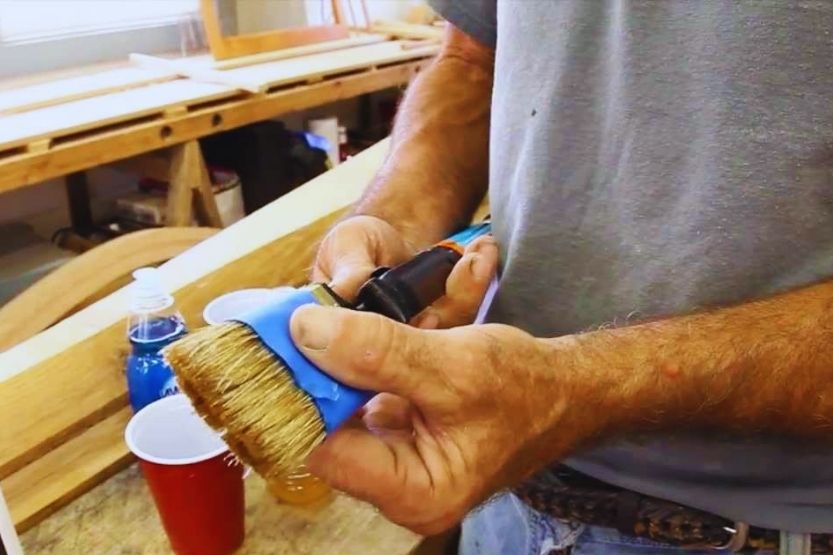
So why should you clean your polyurethane brushes? Here are the most viable reasons:
1. Save Time and Energy
It always helps to be prepared for projects that may come up. This is true whether you are thinking of making a career out of carpentry or not. Most jobs come with advance notices, so you have enough time to prepare your tools. However, there are times when they would pop out of nowhere, and you need to start immediately.
Having clean brushes always ready will save you a lot of time and energy. You can also eliminate the stress of having to wash an already stiff brush that you used in an earlier job just.
2. Consistent Quality of Work
If you do not clean your polyurethane brush immediately after use, it will dry out, causing the PU to calcify. It will become almost impossible to clean when that happens, at least not without pulling the bristles out.
Once you use the brush again, expect not to lay down the polyurethane as smoothly as before. This results in you putting down more coats to even the surface.
3. Shows Professionalism
Many people judge a craftsman’s worth by the condition of their tools. If someone comes into your home and asks to borrow a certain tool, you will have no issue with it. The reason is that you can confidently show them your pristine tools.
4. Extends the Lifespan of Your Brushes
Brushes might have a limited number of uses. However, you should still do all you can to make the most use of them. This is just more practical than throwing away brushes after every use. If you use a high-quality brush and clean it thoroughly after use, it will serve you for years without deteriorating.
Conclusion – How to Clean a Polyurethane Brush
Cleaning polyurethane brushes only takes a couple of steps and materials. To clean water-based polyurethane paints, you only need soap and water. Meanwhile, if you have to clean oil-based polyurethane, you will need mineral spirits, soap, and water.
Cleaning brushes will take less than half an hour each. That said, you do not need to set aside an entire afternoon for the task. Cleaning polyurethane brushes is also very easy, so it would not be practical not to do it.
You will probably save hundreds, if not thousands, of dollars in brushes in the long run. This is possible if you decide to clean them up after every project.

